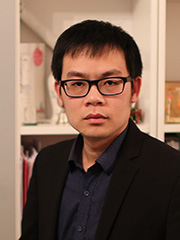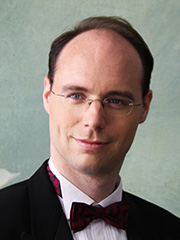| Massive MIMO: From Cellular to Cell-Free Networks | Prof. Hien Q. Ngo | Queen's University Belfast, UK |
|---|---|---|
| Rate Splitting Multiple Access for 6G: Principles, Recent Advances, and Future Research Trends | Prof. Bruno Clerckx | Imperial College London, UK |

With the dramatic growth of wireless devices and services/applications (such as real-time video calls, real-time 3D games, Internet of Things, and smart X), future wireless networks must satisfy the following main requirements: (1) manage at the same time many (millions or even billions) devices; (2) each needs a high throughput; (3) high energy efficiency; and (4) high-level security services. This can be achieved by the massive multiple-input and multiple-output (MIMO) technology where many served antennas coherently serve many users in the same time-frequency resource. Massive MIMO provides very high array gain and multiplexing gain, and hence, offers huge spectral and energy efficiency with simple linear processing. Depending on the system topologies, massive MIMO is divided into two main systems: cellular (collocated) massive MIMO and cell-free massive MIMO. Cellular massive MIMO is becoming mature and is one of the core technologies for 5G networks. The first version of 5G NR with Massive MIMO was standardized by 3GPP. More advanced technologies related to massive MIMO are developing for the future releases of 5G standards. By contrast, cell-free massive MIMO is a very new concept which uses massive MIMO technologies to remove the cells, and hence, overcomes the inter-cell interference--an inherent limitation of cellular systems. As a result, cell-free massive MIMO has gained significant research attention recently, and become one of the most promising technologies for 6G networks and beyond.
This tutorial will provide comprehensive overview of state-of-the-art research on cellular and cell-free massive MIMO. Fundamental aspects of these systems will be discussed in detail. The discussion will serve as a good roadmap for start-up and consequently motivates researchers from both industry and academia to work in this area. First, we provide the basic transmission protocol of cellular/cell-free massive MIMO systems under time-division duplex operation. Then, the derivations of an achievable rate using the well-known “use-and-then-forget bounding” technique in massive MIMO are reviewed. Duplexing operations, favorable propagation, channel hardening, and pilot contamination are also detailed. Finally, we conclude with a range of important topics and future directions.
Hien Quoc Ngo is currently a Lecturer (Assistant Professor) at Queen's University Belfast, UK, and a UK Research&Innovation (UKRI) Future Leaders Fellow. His main research interests include massive (large-scale) MIMO systems, cell-free massive MIMO, physical layer security, and cooperative communications. He has co-authored about 100 research papers in wireless communications, one Cambridge University Press textbook “Fundamentals of Massive MIMO “ (2016), 4 book chapters, and hold one patent.
Dr. Hien Quoc Ngo received the IEEE ComSoc Stephen O. Rice Prize in Communications Theory in 2015, the IEEE ComSoc Leonard G. Abraham Prize in 2017, and the Best PhD Award from EURASIP in 2018. He also received the IEEE Sweden VT-COM-IT Joint Chapter Best Student Journal Paper Award in 2015. He was an IEEE Communications Letters exemplary reviewer for 2014, an IEEE Transactions on Communications exemplary reviewer for 2015, and an IEEE Wireless Communications Letters exemplary reviewer for 2016. He was awarded the UKRI Future Leaders Fellowship in 2019.
Dr. Hien Quoc Ngo currently serves as an Editor for the IEEE Wireless Communications Letters, the Elsevier Physical Communication, the Digital Signal Processing, and the IEICE Transactions on Fundamentals of Electronics, Communications and Computer Sciences. He was a Guest Editor of the IET Communications, special issue on “Recent Advances on 5G Communications” and a Guest Editor of the IEEE Access, special issue on “Modelling, Analysis, and Design of 5G Ultra-Dense Networks”, in 2017. He has been a member of Technical Program Committees for several IEEE conferences such as ICC, GLOBECOM, WCNC, and VTC.
More information can be found at https://sites.google.com/site/nqhienqn/

This tutorial argues that to efficiently cope with the high throughput, reliability, heterogeneity of Quality-of-Service (QoS), massive connectivity, latency requirements, and new emerging services of future 6G multi-antenna wireless networks, multiple access and multi-user multi-antenna communication system design need to depart from the two extreme interference management strategies, namely fully treat interference as noise (as commonly used in 5G, MU-MIMO, CoMP, Massive MIMO, millimetre wave MIMO) and fully decode interference (as in NOMA). To that end, I will introduce the audience to a novel, general and powerful multiple access framework called Rate-Splitting Multiple Access (RSMA) for multi-antenna networks. RSMA is based on multi-antenna Rate-Splitting (RS) at the transmitter and successive interference cancellation (SIC) at the receivers. RSMA relies on the split of messages and the non-orthogonal transmission of common messages decoded by multiple users, and private messages decoded by their corresponding users. This enables RSMA to softly bridge and therefore reconcile the two extreme strategies of fully decode interference and treat interference as noise and provide room for spectral efficiency, energy efficiency and QoS enhancements in a wide range of network loads and user deployments, robustness against imperfect Channel State Information at the Transmitter (CSIT), as well as feedback overhead and complexity reduction. RSMA provides a powerful framework for the design and optimization of non-orthogonal transmission, multiple access, and interference management strategies in future MIMO wireless networks. Thanks to its versatility, RSMA has the potential to tackle challenges of modern communication systems and is a gold mine of research problems for academia and industry, spanning fundamental limits, optimization, PHY and MAC layers, and standardization. This tutorial will share key principles of RSMA, recent developments, emerging applications and opportunities of RSMA for 6G networks and will cover many of the topics currently investigated as part of the new IEEE special interest group on RSMA (https://sites.google.com/view/ieee-comsoc-wtc-sig-rsma/home)
Bruno Clerckx is a (Full) Professor, the Head of the Wireless Communications and Signal Processing Lab, and the Deputy Head of the Communications and Signal Processing Group, within the Electrical and Electronic Engineering Department, Imperial College London, London, U.K. He received the M.S. and Ph.D. degrees in applied science from the Université Catholique de Louvain, Louvain-la-Neuve, Belgium, in 2000 and 2005, respectively. From 2006 to 2011, he was with Samsung Electronics, Suwon, South Korea, where he actively contributed to 4G (3GPP LTE/LTE-A and IEEE 802.16m) and acted as the Rapporteur for the 3GPP Coordinated Multi-Point (CoMP) Study Item. Since 2011, he has been with Imperial College London, first as a Lecturer from 2011 to 2015, Senior Lecturer from 2015 to 2017, Reader from 2017 to 2020, and now as a Full Professor. From 2014 to 2016, he also was an Associate Professor with Korea University, Seoul, South Korea. He also held various long or short-term visiting research appointments at Stanford University, EURECOM, National University of Singapore, The University of Hong Kong, Princeton University, The University of Edinburgh, The University of New South Wales, and Tsinghua University. He has authored two books on “MIMO Wireless Communications” and “MIMO Wireless Networks”, 200 peer-reviewed international research papers, and 150 standards contributions, and is the inventor of 80 issued or pending patents among which 15 have been adopted in the specifications of 4G standards and are used by billions of devices worldwide. His research area is communication theory and signal processing for wireless networks. He has been a TPC member, a symposium chair, or a TPC chair of many symposia on communication theory, signal processing for communication and wireless communication for several leading international IEEE conferences. He was an Elected Member of the IEEE Signal Processing Society SPCOM Technical Committee. He served as an Editor for the IEEE TRANSACTIONS ON COMMUNICATIONS, the IEEE TRANSACTIONS ON WIRELESS COMMUNICATIONS, and the IEEE TRANSACTIONS ON SIGNAL PROCESSING. He is/has also been a (lead) guest editor for special issues of the EURASIP Journal on Wireless Communications and Networking, IEEE ACCESS, the IEEE JOURNAL ON SELECTED AREAS IN COMMUNICATIONS, the IEEE JOURNAL OF SELECTED TOPICS IN SIGNAL PROCESSING, and the PROCEEDINGS OF THE IEEE. He was an Editor for the 3GPP LTE-Advanced Standard Technical Report on CoMP. He is an IEEE ComSoc Distinguished Lecturer 2021-2022.